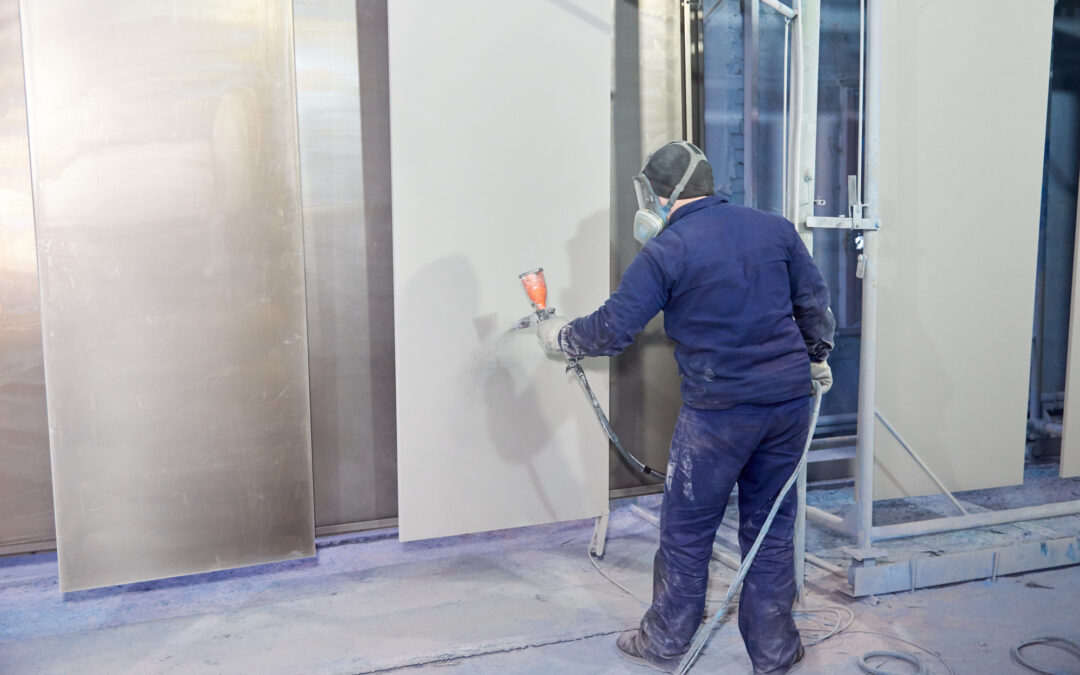When it comes to industrial and construction work, maintaining a comfortable and safe working environment is essential. One critical aspect of this is selecting the right heating solution for your needs.
There are two primary types of heaters used in industrial and construction settings – direct and indirect heaters. We’ll discuss their key differences, benefits, and drawbacks to help you make an informed decision and ensure your work site remains warm, productive, and safe throughout the year.
WHY IS THE TYPE OF HEATER I USE ON THE JOB SITE IMPORTANT?
A heater is for more than keeping an area warm. The type of heater you use can significantly impact your team’s productivity, safety, and overall project success. A few key factors include:
- Dryness. Choosing the appropriate heater can ensure proper drying and prevent potential damage to your materials and equipment.
- Productivity. Selecting the right heater will ensure that your team remains warm, comfortable, and productive throughout the project duration.
- Carbon Monoxide (CO). Depending on your job site’s ventilation capabilities, choosing the right heater type can help minimize the risk of CO poisoning and keep your team safe.
- Frost Protection. Selecting a heater that provides consistent and reliable heat output can protect your assets from frost-related damage and ensure the integrity of your project.
- Preventing Mold Growth. Excess moisture can lead to mold growth, which can compromise your project’s structural integrity and create health hazards for your workers.
DIRECT-FIRED HEATERS
A direct-fired heater, also known as an open flame or direct combustion heater, is a heating system where the air is heated directly by the combustion process. In direct-fired heaters, fuel (such as natural gas, propane, or diesel) is burned, and the resulting heat is transferred directly to the air being circulated in the area.
Advantages of Direct-Fired Heaters:
- High Thermal Efficiency. Direct-fired heaters can achieve thermal efficiencies of up to 100%, leading to little wasted fuel.
- Rapid Heating. Direct-fired heaters can quickly raise the temperature of a space, making them suitable for large spaces and areas with limited insulation.
- Portability and Ease of Installation. Many direct-fired heaters are designed to be portable and easy to install. Most also come with multiple safety features to let you operate them with minimal supervision.
- Fuel-Based: Some models do not rely on electricity. These can be ideal in spaces that lack a generator or power source.
Drawbacks of Direct-Fired Heaters:
- Combustion Byproducts. Direct-fired heaters can put chemical by-products in the air, such as carbon monoxide, nitrogen dioxide, and water vapor. This can lead to mold, health issues, and safety risks if proper ventilation is not in place.
- Not Suitable for All Environments: Combustion byproducts can cause damage or contamination to products and equipment. It is not suitable for places that require high sanitation like healthcare areas or food processing plants.
- Requires Access to Open Air: Direct-fired heaters need fresh air and good circulation to operate efficiently. Chemical by-products like carbon monoxide also make them dangerous to use in poorly ventilated areas and tightly sealed spaces.
INDIRECT-FIRED HEATERS
An indirect-fired heater, also known as a closed combustion or indirect combustion heater, is a heating system where the combustion process is separated from the air being heated. In indirect-fired heaters, fuel is burned in a combustion chamber, and the air is heated as it passes a heat exchanger. This results in cleaner, safer, and dryer air at the cost of speed and efficiency.
Advantages of Indirect-Fired Heaters:
- Clean Heated Air. Indirect-fired heaters provide clean, breathable air as the combustion byproducts are vented out an exhaust and never come into contact with the heated air, ensuring a healthier and safer environment. This makes it ideal of health spaces, food production plants, and small indoor spaces if the exhaust fumes are appropriately vented out.
- Versatile Applications: Indirect-fired heaters can be used in a wide range of environments, including those with sensitive materials, tightly sealed spaces, or via ventilation ducts. The low moisture content also makes it ideal for drying, curing, and preventing mold.
- Reduced Safety Risks. Indirect-fired heaters reduce the risk of carbon monoxide exposure and other combustion-related safety hazards.
Drawbacks of Indirect-Fired Heaters
- Lower Thermal Efficiency: Some heat is lost during the transfer process through the heat exchanger.
- Slower Heating. It may take longer to raise the temperature of a space compared to direct-fired heaters.
- More Costly: An indirect fire heater is larger and has more moving parts. This can make it more costly to transport, rent or buy, and maintain.
HOW TO CHOOSE THE RIGHT ONE FOR YOUR JOB SITE
Choosing between a direct-fired and an indirect-fired heater for a job site depends on several factors, including the specific needs of the project, the work environment, and safety requirements. When you are choosing between the two, you should consider:
Ultimately, the decision between a direct-fired and an indirect-fired heater should be based on a thorough assessment of the job site’s unique requirements, weighing factors like
- Indoor air quality
- Ventilation
- Heating speed
- Efficiency
- Budget
- Local, state, and federal safety regulations.
By carefully considering these factors, you can select the most appropriate heating solution for your project.
RCS CAN HELP YOU CHOOSE THE PERFECT FIRED HEATER FOR YOUR JOB SITE
Still unsure which fired heater is the right fit? The RCS management team consists of experienced project managers and supervisors, all carrying industry certifications. Contact us today for a consult!





